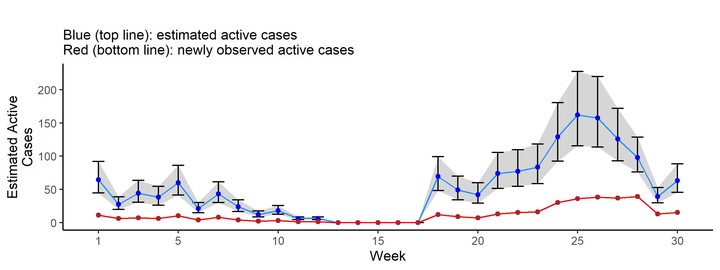Under-reporting of COVID-19 in the Northern Health Authority region of British Columbia

Abstract
Asymptomatic and pauci-symptomatic presentations of COVID-19 along with restrictive testing protocols result in undetected COVID-19 cases. Estimating undetected cases is crucial to understanding the true severity of the outbreak. We introduce a new hierarchical disease dynamics model based on the N-mixtures hidden population framework. The new models make use of three sets of disease count data per region: reported cases, recoveries and deaths. Treating the first two as under-counted through binomial thinning, we model the true population state at each time point by partitioning the diseased population into the active, recovered and died categories. Both domestic spread and imported cases are considered. These models are applied to estimate the level of under-reporting of COVID-19 in the Northern Health Authority region of British Columbia, Canada, during 30 weeks of the provincial recovery plan. Parameter covariates are easily implemented and used to improve model estimates. We compare two distinct methods of model-fitting for this case study: (1) maximum likelihood estimation, and (2) Bayesian Markov chain Monte Carlo. The two methods agreed exactly in their estimates of under-reporting rate. When accounting for changes in weekly testing volumes, we found under-reporting rates varying from 60.2% to 84.2%.
Parker, M.R.P., Li, Y., Elliott, L.T., Ma, J. and Cowen, L.L.E. (2021), Under-reporting of COVID-19 in the Northern Health Authority region of British Columbia. Canadian Journal of Statistics, 49: 1018-1038. https://doi.org/10.1002/cjs.11664.